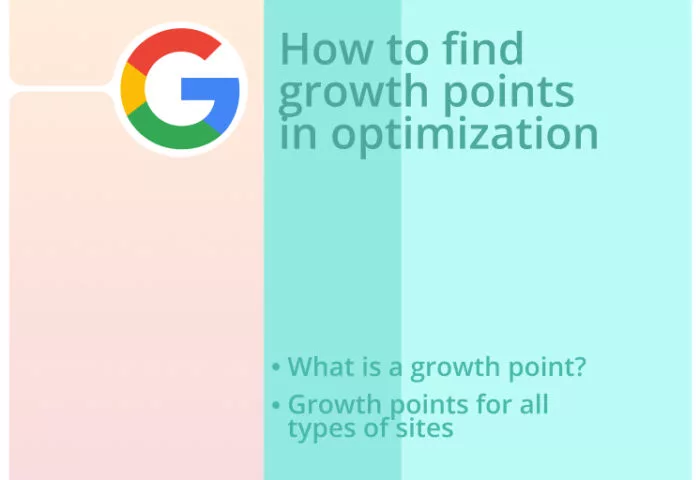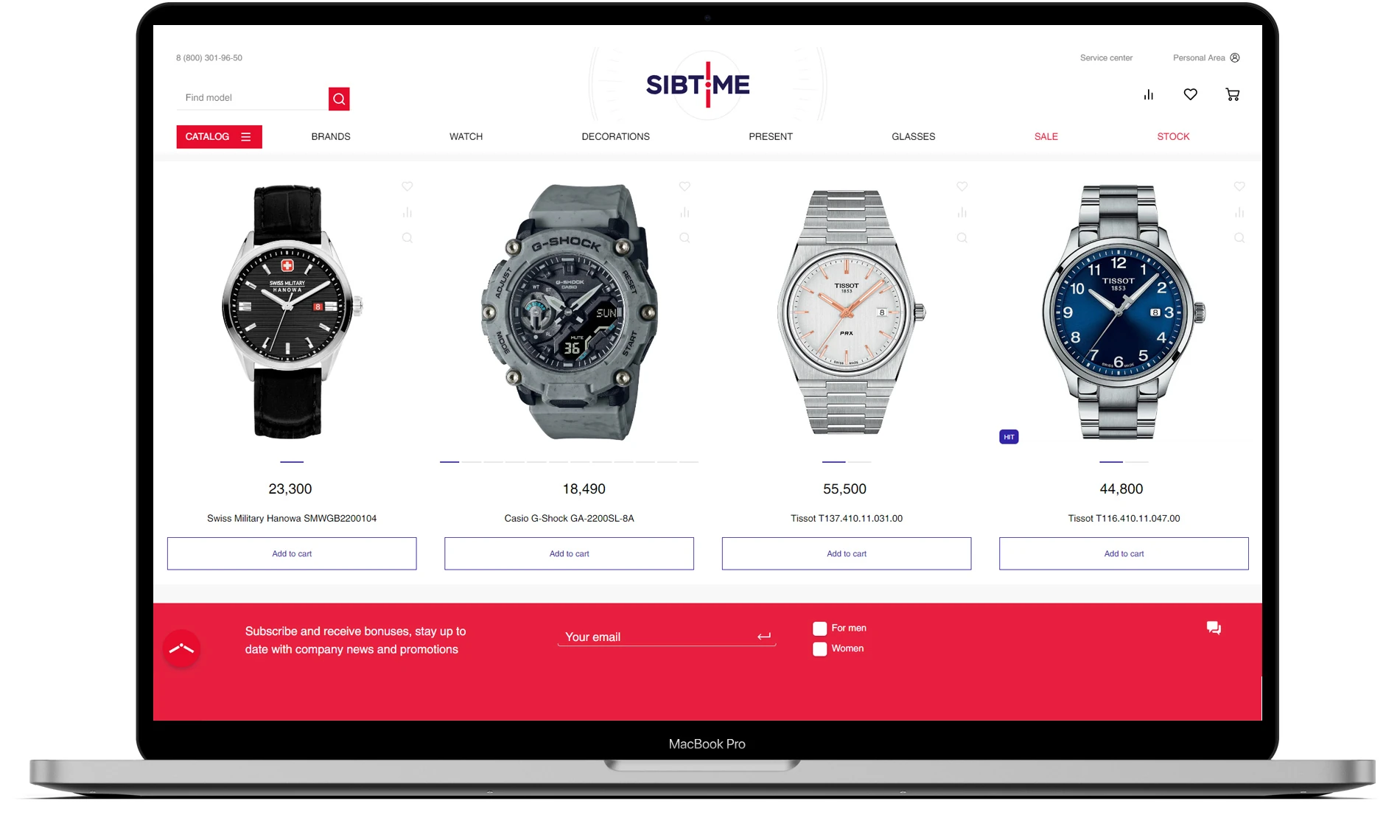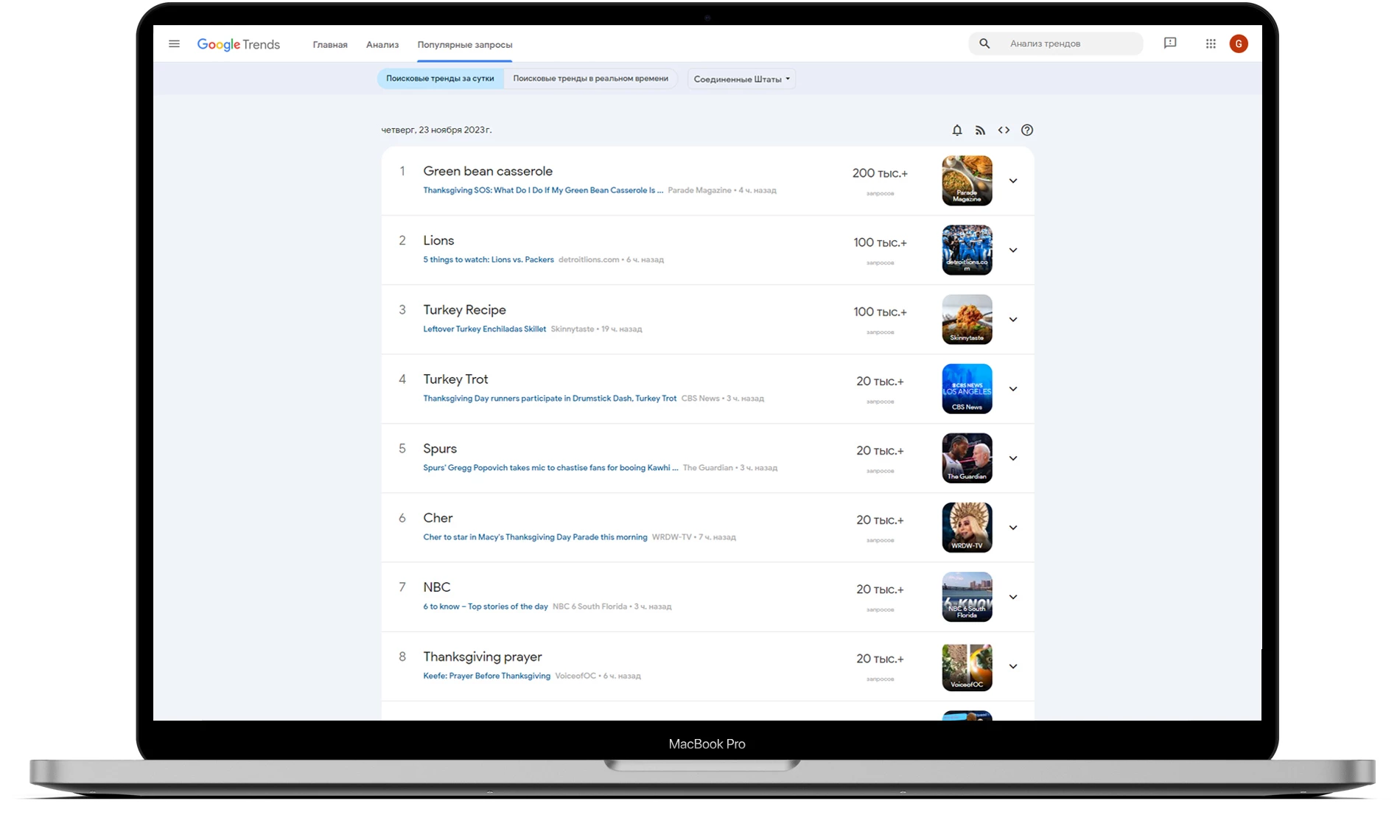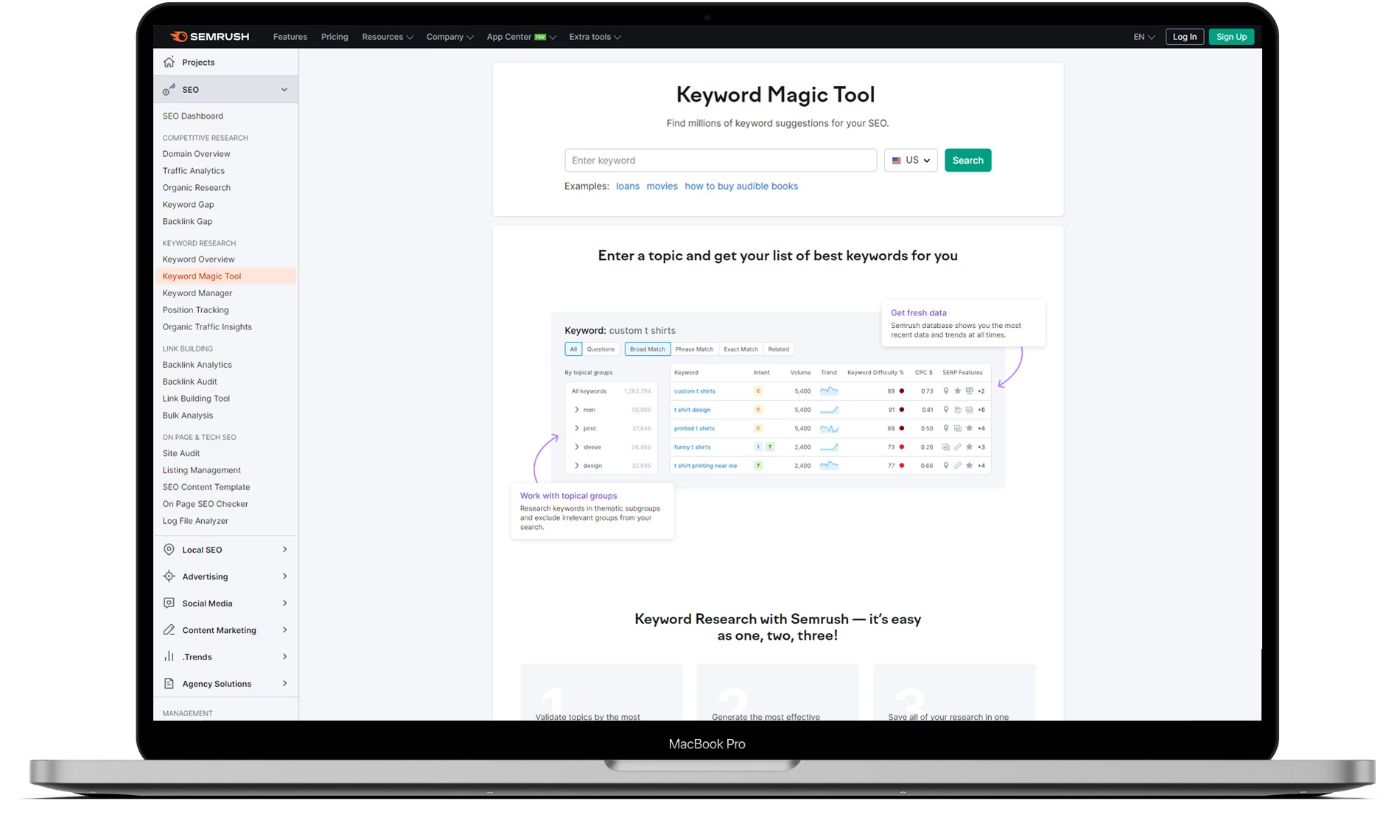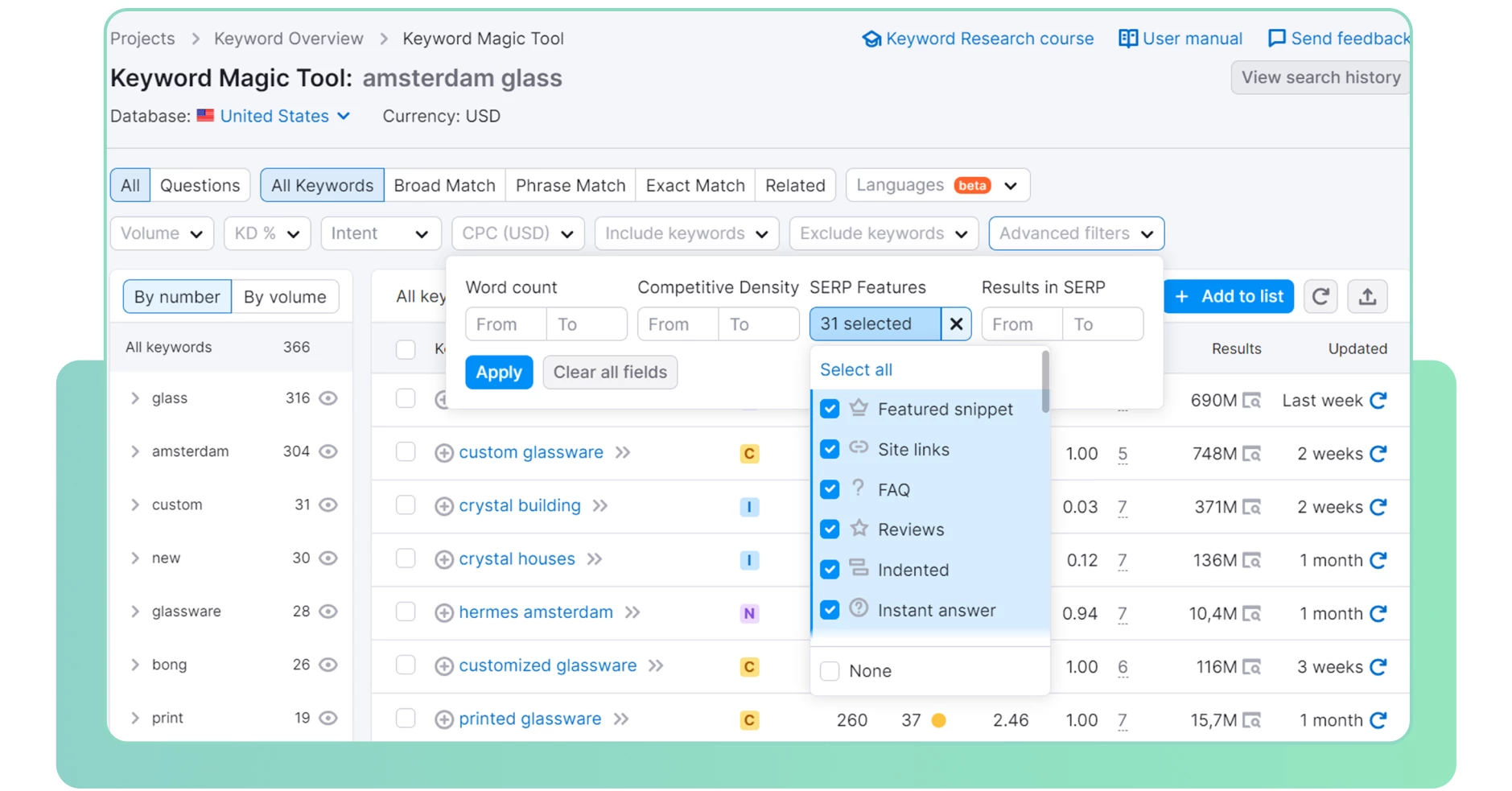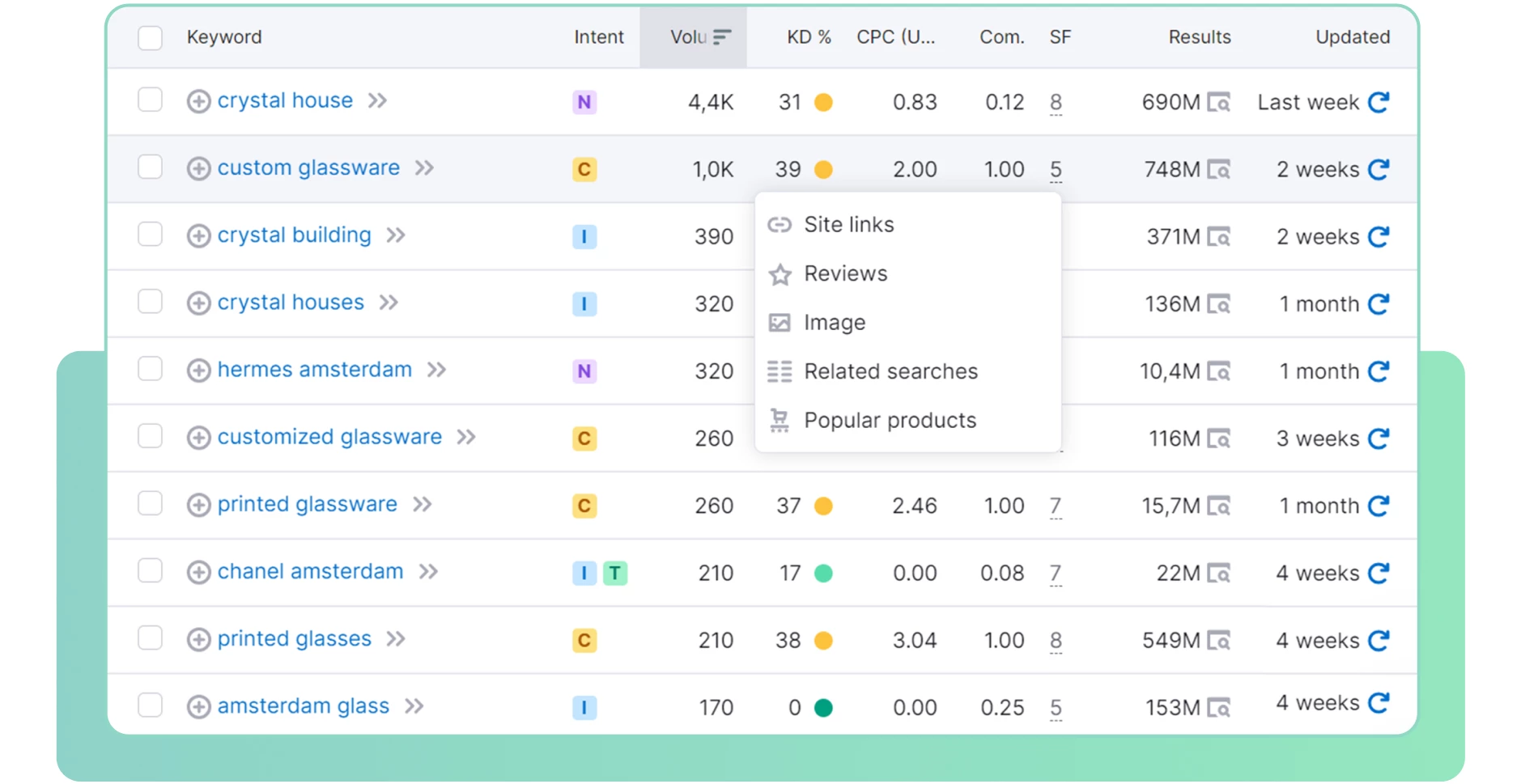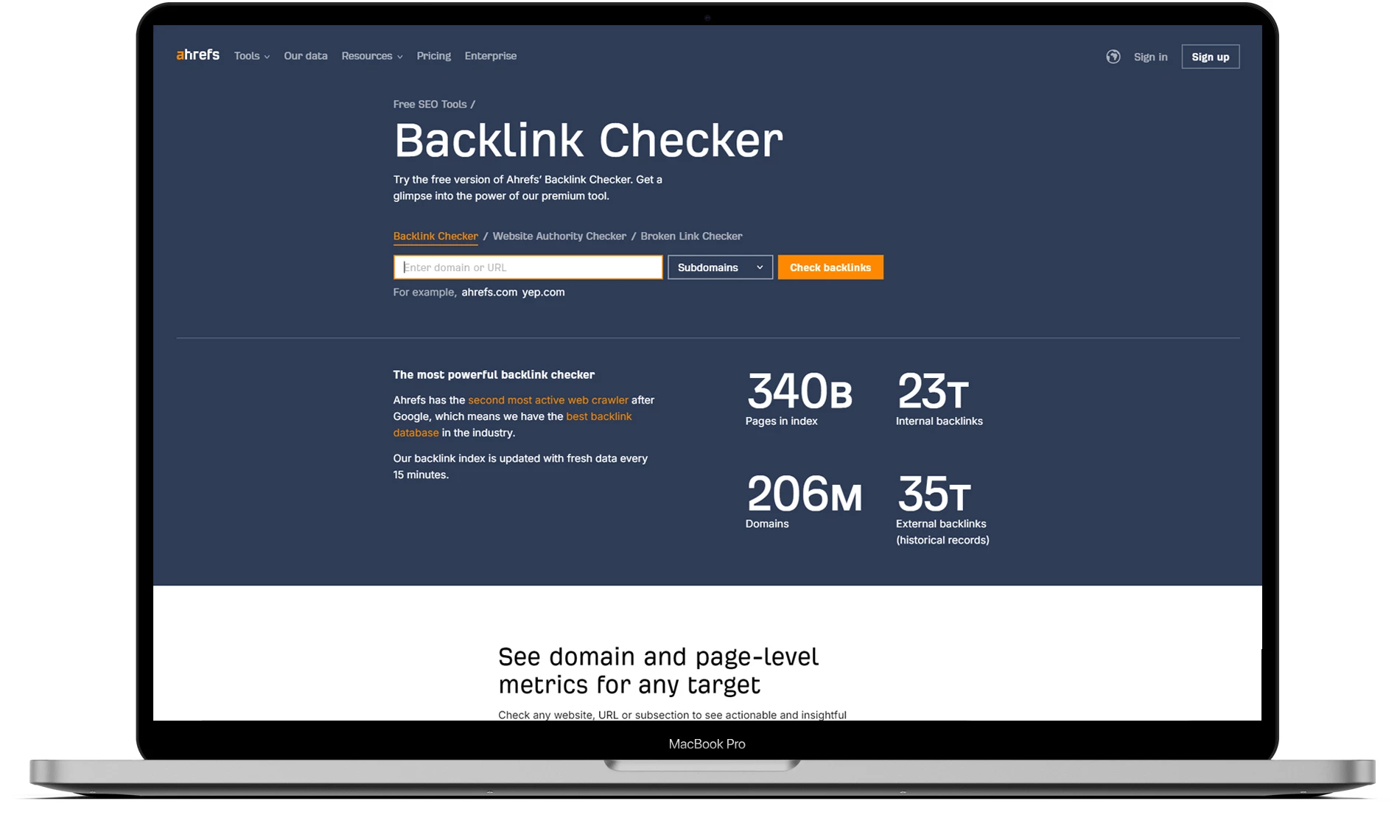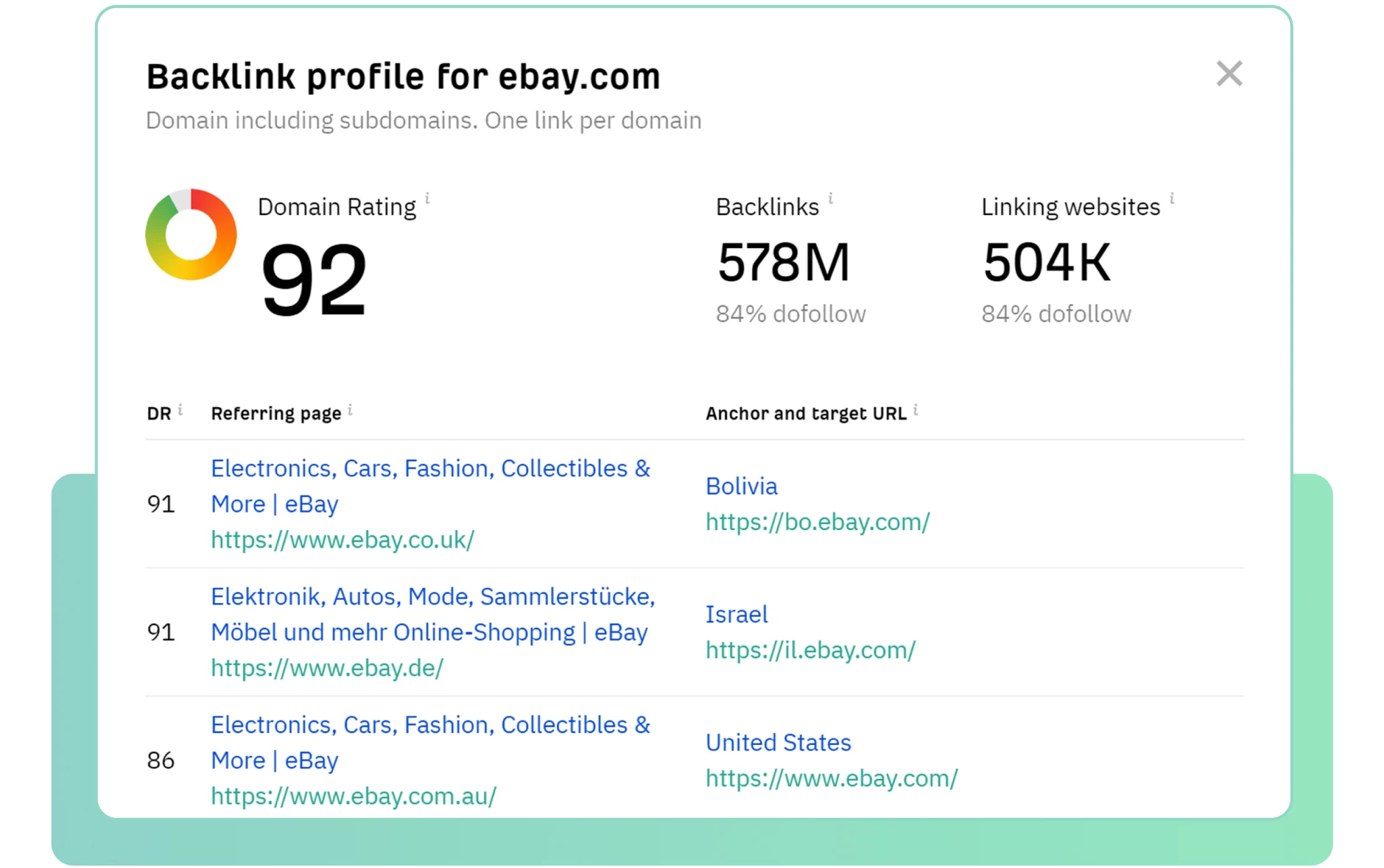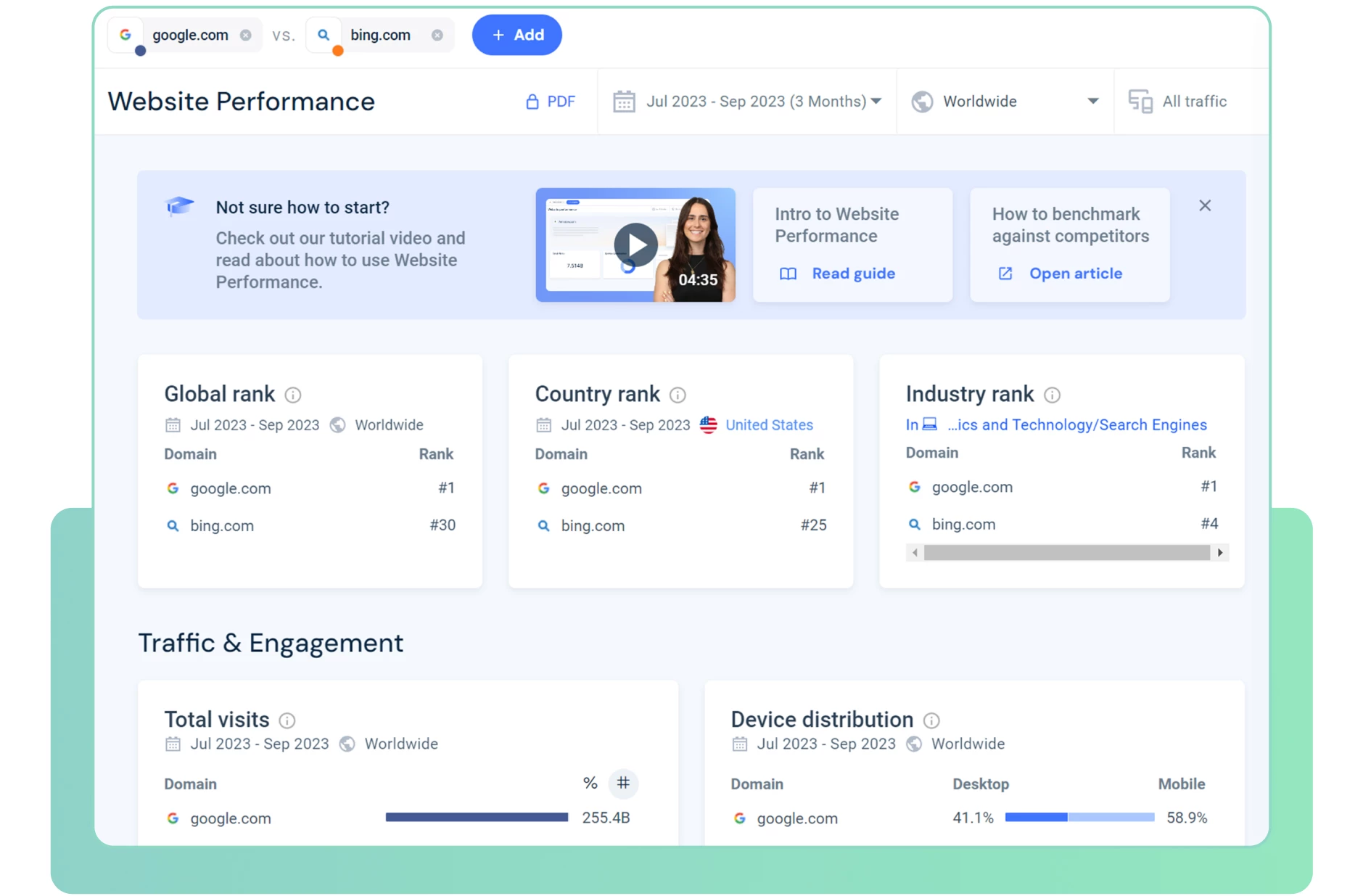How to find growth points in SEO optimization
Dear friends, I am glad to greet everyone! In this article, I would like to discuss the process that is often put off for later. Specifically, finding those growth points for SEO optimization of a website (whether it’s a client’s or your own).
We will talk about the basic growth points for different types of sites, such as blogs, online stores, news sites, corporate websites, etc. We will also discuss how to independently find growth points to increase organic traffic to your site through competitor analysis.
What is a growth point in SEO?
In the context of SEO optimization, a growth point refers to practically any action aimed at increasing organic traffic. Whether it’s local SEO, basic on-page optimization, speeding up loading times – it doesn’t matter. All of these actions can be considered growth points.
Some of them, like loading speed, are applicable to practically any website (although it’s worth understanding that for blogs, news sites, and e-commerce, this parameter is much more important).
And there are actions that are absolutely meaningless. For example, for a personal blog, local SEO settings rarely matter.
Growth points for news sites
● Use of interrogative keywords.
An easy way to get into a Google news snippet. Yes, of course, general and complex keywords are also relevant.
● Creating AMP.
What does a user want when googling the latest news? Fast access to information! And that’s exactly why you can and should use AMP.
● Use of categories and tags.
Use category pages for convenient navigation through the news. Additionally, for additional filtering, you can place tags. For example, in the “Sport” category, you can create tags related to individual sports. Plus, you have the opportunity to optimize category pages for general keywords.
● Creating Sitemap.
A properly constructed sitemap affects the speed of indexing your pages. You can read more about sitemaps at this link.
● Comments.
Open up comments on the news to increase activity on the page and attract the attention of search algorithms due to increased engagement.
● Evergreen content.
Often, young news publications, driven by excitement, forget about the importance of evergreen content, which will provide you with organic traffic over a long period of time.
● Content syndication.
If you plan to additionally publish content prepared for your site on other platforms, check out this video:
“Amanda Milligan ? Content Syndication for SEO”
● Keyword cannibalization.
Feel like you’re not getting full organic traffic even though you’re using the right keywords? Perhaps you’re posting listings too often without a well-thought-out content strategy.
● Internal links.
Consider your strategy for working with internal links. If you have the opportunity to neatly place a link to an old article in a new one and it looks natural – just do it!
● Publisher Center.
Learn to work with this Google tool to increase the chances of your news appearing in Google News.
● RSS.
An outdated but still functional way to deliver news. It’s easy to set up and will likely be beneficial.
● Paywall.
If you decide to monetize your content with paywall, don’t forget to use schema.org markup so that search engine robots have access to index the entire page.
Naturally, in reality, there are many more points of growth for a news site. But how to find growth points for your site yourself, we will talk about at the end of the article. And also give links to some tools that will help you in this endeavor.
Growth points for blogs
In fact, personal blogs are very similar in the way they work to news sites, so some of the recommendations above can definitely be used. In fact, the main difference between blogs is that most of them publish niche trending and evergreen content. This can include:
✔️ evergreen content;
✔️ commentary;
✔️ content syndication;
✔️ tags;
✔️ categories.
Oh, and the same AMP, but purely its problem is its huge resource requirements. If you’re blogging on your own, it’s unlikely that you will
you’re going to have the energy and time.
And here’s exactly what you can advise for search engine optimization of blogs:
● Work with keywords.
Yes, no matter how banal it sounds, but many authors, especially beginners, simply neglect it. For example, you can use this free tool to search for ideas. To search for keywords and topics for articles according to the following parameters: low keyword complexity, medium – high volume + high click rate.
● Headlines.
Compose headlines so that your audience wants to click on it. After all, clicks are also part of ranking in Google. You can read more about this in our article.
● The right URL.
Don’t be lazy to think about the algorithm of your publications’ URL in advance. Search engines pay attention to the presence of the keyword
in the URL.
● Links, links and links again.
To increase the authority of your domain, you can use external links to quality publications from the top 5 positions in SERPs to create a positive association for search algorithms.
● Description meta tag.
There is a little trick that many people don’t notice because they are just used to it. Google highlights words in SERPs that match your search query.
● Search Intent.
When creating your content plan, learn how to select keywords based on intent. If you take out your beauty blog and write an article tutorial on makeup it will be strange if you use keywords with commercial search intent.
Again I make a certain remark.
*Any SEO expert will tell you that things like search intents, URLs and meta tags, for example, are relevant to optimizing most website categories. Yes, they are, but the comicality of the situation is that the turn to them most often comes only after a lot of audits, making endless strategies and other manipulations. But everything is much simpler – JUST DO IT!
Growth points for local sites
Now let’s move on to the phenomenon of small local sites of companies that provide their services in a certain region, country or even city. The main problem with such sites to this day is that they are almost entirely focused on paid traffic. Therefore, growth points = mistakes that are made when creating local sites.
Growth points for city and regional company websites:
● Local directories.
Virtually every region has local company directories. Listing in several directories will help you gather external links to attract organic traffic and increase search engine trust in the domain.
● Google Company Profile.
To get your site listed in Google’s advanced rankings, you need to start a Google Business Profile, you can do this by following this link.
● Local keywords.
Unlike classic SEO, localized keys are used for localized SEO. Despite the fact that their search volume is smaller, the relevance for a particular region will be higher.
● Testimonials.
Fill the site with testimonials from your customers with proper markup so that they show up in Google’s business profile. This way you’ll get a small but nice boost in relevance.
*Important point:
If you provide services for people from different regions (e.g. hotels, legal advice on relocation), don’t forget to optimize your site for multiple languages. You can read about multi-lingual sites here.
In general, try to follow the basic guidelines for search engine optimization in Google:
✔ Site load speed;
✔ Links;
✔ Image optimization;
✔ Meta tags (localized).
*Experiment and then you will be successful in promoting your site)!
Growth points for online stores
With online stores, and in general with e-commerce things are a little more complicated. All because of the number of resources that are needed to optimize most of the interesting growth points in search engine optimization of online stores.
Here are some of them:
● Using a smart product filter.
Yes, a smart filter requires quality implementation. But it can bring you up to 40% of low-frequency traffic with precise queries. All you have to do is give the user what they want.
● Creating category and subcategory pages.
The principle is roughly the same as with news sites. Category pages are optimized for medium-frequency keys and with adequate optimization start to “catch” organic traffic.
● Product comparison pages.
This is the domain of large online stores, but if you have the opportunity to engage specialists to develop and optimize such pages – do it. You will kill two birds at once: make your site more convenient in terms of usability + get the opportunity to catch traffic on point comparison queries. In fact, half of comparison queries have a commercial intent, so the user wants to get a comparison of characteristics, not an advertising article.
● Talking URLs.
Use keywords in URLs, so it will be easier for the search engine to understand the relevance of your page when indexing.
● Product articles.
Very relevant in many niches, such as auto parts. Where often search not only by keys like “left mirror ford fiesta”, but can also use the article “CBK, F6JA” at the same time articles can be divided, both
to the car and the parts themselves.
● Reviews.
To increase the credibility of the domain, you can use product reviews right inside the product card. Like on all major marketplaces.
● Page load speed.
A very important parameter for e-commerce, especially within mobile versions. The law is simple: the longer the page takes to load, the higher the bounce rate of site visitors will be.
● Canonicality.
We often notice that the content in some places, and sometimes the whole page is duplicated. In order not to anger the algorithms choose canonical pages for indexing.
● Images.
With images, you can farm some good traffic if you use alt tags with your keywords.
*In the realities of e-commerce, this is just a drop in the ocean of your opportunities. To constantly develop your online shop, you need to analyze your competitors and market trends.
Growth points for corporate websites (Enterprise)
The final category in our article will be Enterprise. And in our opinion, in terms of complexity of SEO optimization, they can be safely put in second place after e-commerce. Multilingualism and multiregionality, complex site structures, a huge number of pages – all this can be found on large corporate sites.
Let’s move on to possible growth points:
● SEO audits.
And yes, as funny as it sounds, in all seriousness these guys really need regular audits to check: technical optimization, load speed, content quality, UX and conversion.
● Internal Search.
To reduce bounce rates and improve user experience – implement internal search on your website pages. The user wants to find the information they need right away, not navigate through excesses of corporate luxury.
● Relevance and openness of contact information.
Sometimes it happens that even large corporate sites have a lonely e-mail address in the contact section. Fill in the contact information to the maximum + use micro markup to make it easier for search robots to process the information.
● Multiregionalism/multilingualism.
If you are working with a site of an international corporation, check the correctness of multiregional approach implementation. You can read about it at the link.
● Implement CDN.
In fact, this item can be considered as part of a multi-regional site. The implementation of a content delivery system affects the convenience and speed of loading pages in any corner of the earth, which increases your position in the eyes of the search engine.
Yes, and in general for search engine optimization enterprise site requires a global strategy, within which will be implemented all the points above, as well as canonicity, work with the link mass (and do it as carefully and qualitatively as possible), etc.
How to look for and analyze growth points
Before we get to the process itself, let’s look at how growth points can be prioritized:
1. Fixing “broken” growth points.
Points that were bringing us organic traffic but for whatever reason stopped doing so.
2. Ongoing growth points.
Those points that can be done in the here and now. For example, you already have a pool of pages that can be optimized for content, meta tags, and more.
3. Potential growth points.
Those points that you need to look for and analyze them for suitability of implementation in the current moment or introduction into future SEO strategy.
Fixing what’s broken
In the first case, it’s not as complicated as it seems. It is enough to conduct basic analytics. For example, open Search Console and find all the “sagging” pages. But it’s important to remember that the main key to success in such a case is the right comparison period. If your business is seasonal, then compare it to the entire last year. In the absence of a bright seasonality take any convenient period for comparison.
However, definitely do not take for analysis periods where your site was present serious technical errors or search engine penalties.
Now you need to highlight the pages that fit under:
● Had good results in the period before the fall;
● Lost a significant amount of traffic;
Separate such pages from those that have lost relevance.
Simple example:
You compare keys, for example for September 22″ and 23″.
And then filtrate the keys on the parameters: dropped in traffic by more than 35%, lost more than 50 people, the number of conversions is equal to or greater than 300. Such pages will be very few, but their “fix” is likely to give you a tangible profit.
Already have it, but haven’t done it yet
This category is a little easier to deal with. Check your current site for
technical errors and basic parameters (meta tags, optimization, image, content uniqueness).
See which pages are already bringing you at least minimal traffic, analyze it and “rock” the page as much as you can. For most of the points you don’t need to have unique expertise or expensive tools.
● You can use Speed Insight to check the download speed.
● To analyze broken links, you can use Broken Link Checker.
● For general analysis you can use this tool – Seobility.
Looking for a new one
And now for the most interesting part. Finding new points of growth.
Working with a creative and analytical approach. The easiest thing you can do is to go to Google Trends and look for relevant topics that you can use within new categories or articles on your site.
Here’s our recent article on Trends detailing the tool.
The second interesting flyhack you can resort to as part of your search for new growth points is to use Semrush’s Keyword Magic Tool.
It can be used to find keys that fit into Google’s extended rendition. To do this, you enter the desired keyword. For example, enter “amsterdam glass” and go to Advanced filters. Now SERP Features and select the desired one.
As an option you can consider:
✔ Featured snippet
✔ FAQ
✔ Reviews
✔ Instant answer
✔ News
✔ Image & Image Pack
And we get the following result:
And the last important point – analyze your competitors.
And this applies not only to technical settings and keywords, but also behavioral factors.
If your competitor is an online store, then look at what filters they use, how the ordering process is implemented, etc. Here’s a selection from tools that will help you in this difficult endeavor. You can also use Semrush to search for competitors. Click on the desired keyword to open Keyword Overview.
Scroll down the page a bit to see the SERPs for this keyword in the selected region. This way you can gather a list of competitors. To see links on a competitor’s site, you can use a free tool from Ahrefs – Backlink Checker.
Enter the desired domain and click the Check backlink button.
You can use SimilarWeb to compare traffic volume. The data in it is relative, of course, but it will do for initial comparison.
As you may have realized from the material above, all actions are aimed at improving the performance of your site in one way or another in different aspects. We have listed only a few ways, you can come up with your own methodology or use any convenient strategy to analyze competitors from the network.
Conclusion
I would like to say that the search for growth points is an activity that is recommended for most SEO specialists, webmasters and interested website owners (with proper technical knowledge, of course).
Dear friends, thank you for reading the article to the end! We hope the article was interesting, and most importantly useful. We will be glad if you share in the comments your own experience in finding organic traffic growth points for your site.



